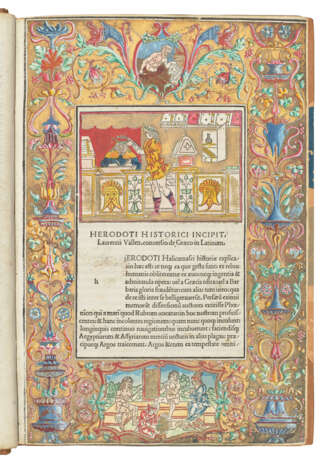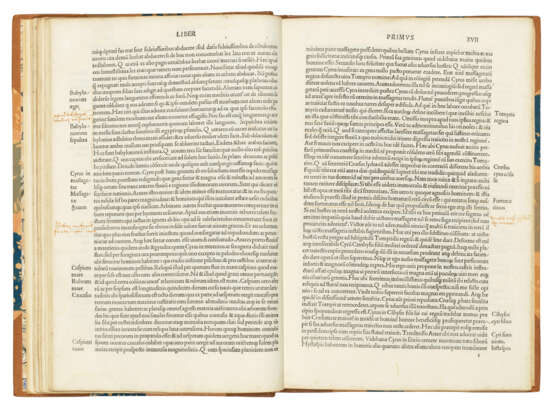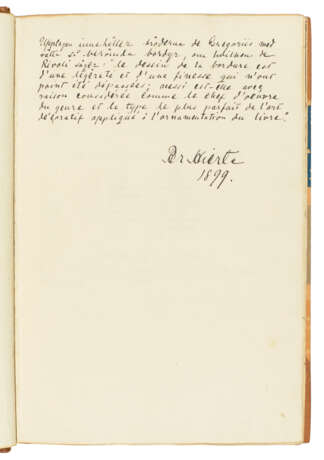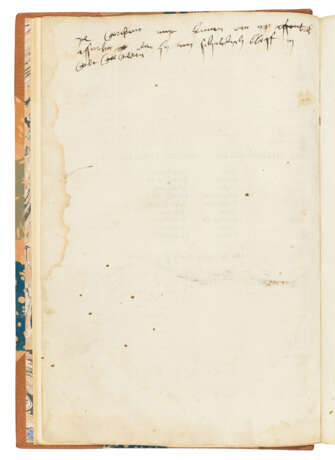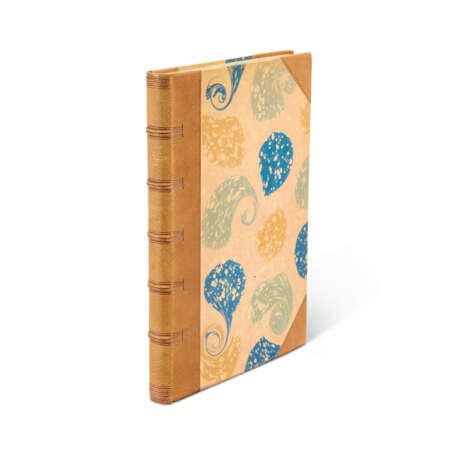ID 1249794
Lot 135 | HERODOTUS (fl. 5th century BC)
Estimate value
£ 4 000 – 6 000
Historiae. Translated from Greek into Latin by Laurentius Valla, edited by Antonius Mancinellus. Venice: Johannes and Gregorius de Gregoriis, de Forlivio, 8 March [but after 30 March] 1494.
Third edition of one of the greatest historical works. Alternately treated as the originator of the historical method or as ‘the father of lies,’ Herodotus is nonetheless certainly ‘the earliest historian; his predecessors were by contrast chroniclers’ (PMM). His work, which deals primarily with the history of the Persian wars with the Greek city states, was particularly relevant in the Renaissance, when the Ottomans—another Eastern enemy both alien and strangely familiar—threatened European hegemony. Herodotus composed his history of the Persian wars on an unprecedented scale and comprehensiveness, and it became a model for subsequent classical historiography.
The present edition, preceded only by those of 1474 (Venice: Jacobus Rubeus) and 1475 (Rome: Arnoldus Pannartz), is celebrated for having one of the finest woodcut borders of the 15th century. The black-on-white border features Renaissance ornament and two white-ground insets, the upper showing a faun preparing to sacrifice a goat and the lower showing Hercules at the parting of the ways. It frames a larger cut of the crowning of Herodotus by Apollo and the incipit. Essling saw the hand of the Poliphili Master in these fluid cuts. HC *8472; BMC V, 345 (IB. 21058); Bod.-Inc. H-056; Essling 735; Hind p. 505; Goff H-90; ISTC ih00090000.
Chancery folio (305 x 207mm). 142 leaves. Woodcut vignette and border on a1, the former showing the author writing at his desk, being crowned with laurels in front of a bookshelf, the latter a fine design incorporating floral and fauna and two vignettes of classical scenes, both with later (?18th-century) hand colour heightened in gilt (some faint staining, heavier to first and final leaves, a few small wormholes into text, minor repair to verso of a1, woodcut border just trimmed at fore-edge). Early 20th-century pale brown half pigskin by Swedish royal bookbinder Gustaf Hedberg [1859-1920] of Stockholm (with his ticket), marbled paper boards. Provenance: many early ink annotations – ‘M rutgeri van den Eych de Venlo’ (early inscription on title) – ‘Jacobi Bars alias Alisleger Canonici Xancten’ (early inscription on title) – ?Joachim Beyenz (early inscription on title repeated in initial space on a1) – Baron Per Hierta, Främmestad (book collector, 1864-1924; inscription on endpaper dated 1899).
| Place of origin: | Italy, Europe |
|---|---|
| Auction house category: | Antiquarian books, Books and manuscripts, Printed books |
| Place of origin: | Italy, Europe |
|---|---|
| Auction house category: | Antiquarian books, Books and manuscripts, Printed books |
| Address of auction |
CHRISTIE'S 8 King Street, St. James's SW1Y 6QT London United Kingdom | |
|---|---|---|
| Preview |
| |
| Phone | +44 (0)20 7839 9060 | |
| Buyer Premium | see on Website | |
| Conditions of purchase | Conditions of purchase |
